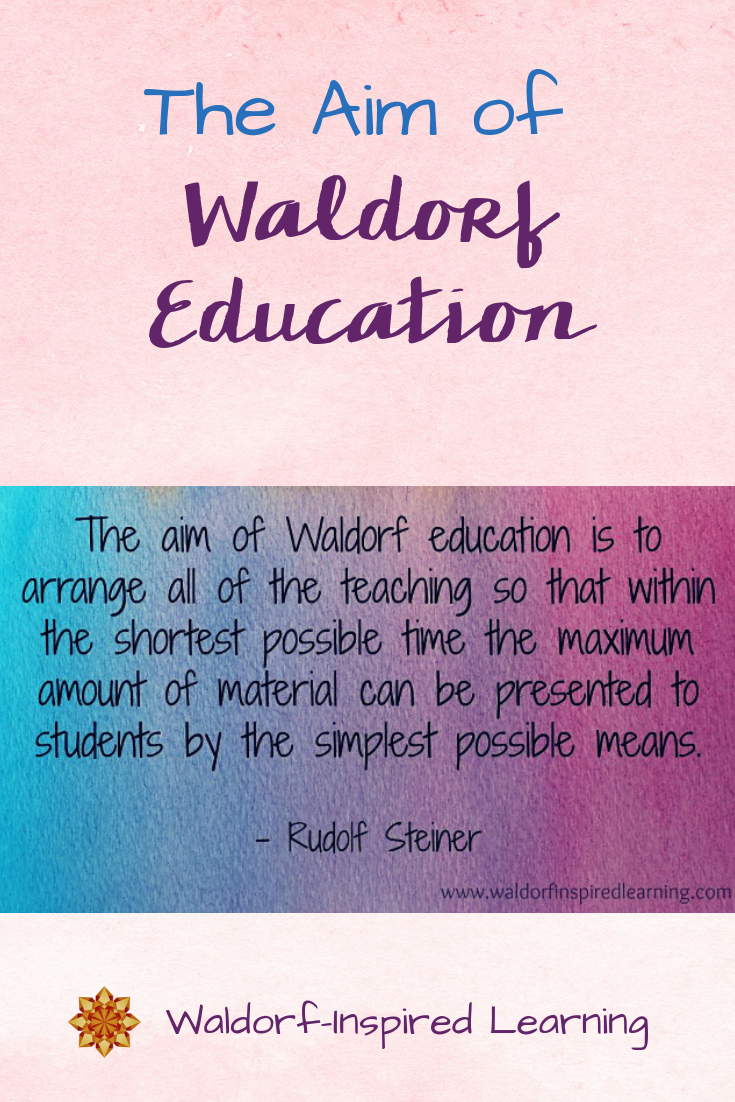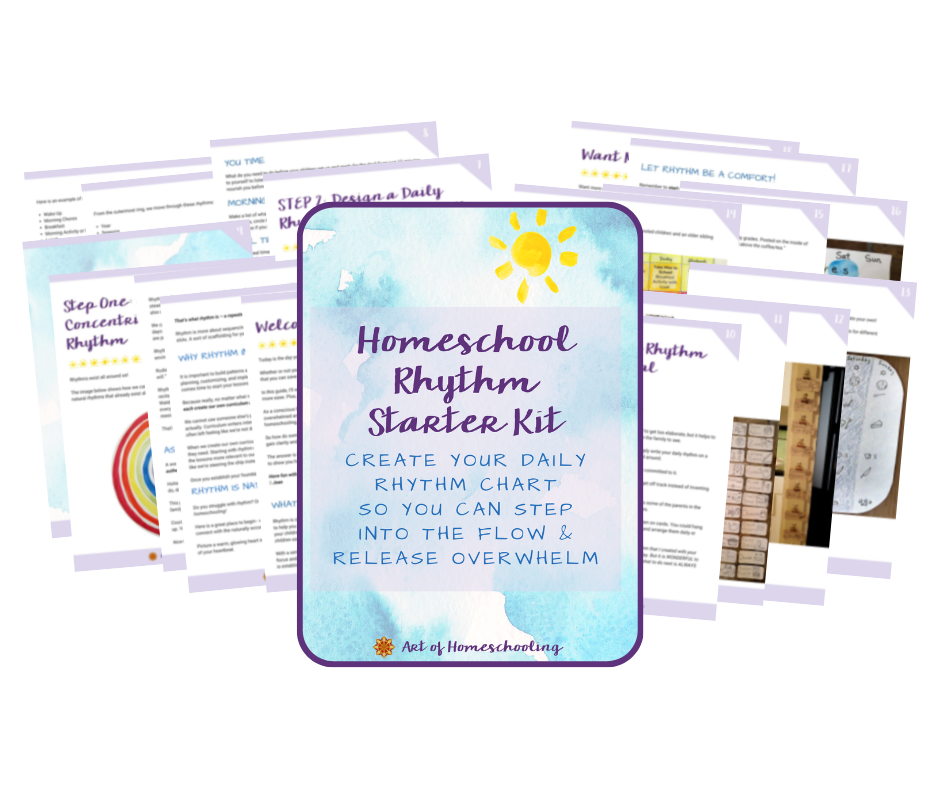We’re up to Day Eleven of the first Waldorf teacher training and the Waldorf School will open in just four days!
Imagine: you’re sitting in this lecture having been recruited to teach in this new school even though you’ve never taught before! Rudolf Steiner is presenting this morning lecture to the twelve of you who will then begin teaching next week the children of the workers at the Waldorf-Astoria cigarette factory in Stuttgart.

Consider This When Creating Waldorf Curriculum
What I love most about this lecture is Steiner’s conclusion:
If we “feed” children what they need in the early years, independent judgement and their own personality “will slowly sparkle in” when they reach adolescence!
Read on to find out more about what that means.
Steiner asserts that “the head is the most completely formed part of the body” when a human being is born. Not completely formed, but almost. The head is fully developed but asleep. And because the head is so well developed already, we need to focus our attention on other areas in order to contribute to the development of the whole human being.
The limbs are quite a different story. They are very much awake with all of their wiggling and kicking, but still undeveloped.
“Here you have the first real attribute of education: the human limbs and chest have the task of awakening the head.”
So in this early stage of human life (before the change of teeth), children are not yet ready for our direct instruction.
“We cannot get a child with kicking legs to do gymnastics or eurythmy. That is impossible. We also cannot get a child when it is still kicking its legs and, at best, crying, to take up musical instruction. We cannot teach the child art.” Yet.
Steiner goes on to say “In this first period of human life, we cannot accomplish much as teachers.”
But there is a “bridge” between birth and when children are ready for more formal learning. I think you’ll find this fascinating! The “bridge” while we wait for children to be ready to teach them? Steiner’s answer is “mother’s milk”! He says that this is the “genius of nature” and that it is a well-founded scientific fact that mother’s milk “is the awakener of the child’s sleeping human spirit.”
“We also see that nature teaches since the nutrition received through milk is the first means of education. Nature teaches naturally. We begin to teach the soul through our language and deeds, which act upon the child educationally.”
That is why it is so important to be conscious that as teachers “we cannot do very much with the head” before the age of seven. Children do learn things through imitating adults at this stage, though.
When children begin elementary school, we begin teaching reading and writing.
“The instruction of reading and writing must be based in art. We must first introduce elements of drawing and painting and music, because these affect the human limb and chest aspects and affect only indirectly the head.”
Steiner is telling us to teach through the will to awaken the intellect. We must remember children have other things to do other than what we do with them! “Children must grow.”
Teachers aim for a balance between imagination and memory when creating Waldorf curriculum. So teachers must observe children over time in order to achieve this balance, checking in particularly when the children enter the phases that begin at ages 7, 9 and 12. We’ve got that covered in homeschooling!
“Teachers slowly come to know the children…This is why it is so important that you have the same children during all of the school years, and why it is so idiotic that children have a different teacher every year.”
Steiner’s theory is that children tend to grow too quickly with too much memory work, and too slowly with too much imagination. Our aim is a balance between the two.
So, we include artistic activity engaging the imagination, as well as retelling stories and memorizing verses in our lessons.
Everything is interconnected. As teachers, we cannot just properly define everything but instead want to be flexible.
This lecture clearly delineates the three stages of development in such a simple way. It’s a great companion to this lecture from Day Ten: The Three Stages of the Waldorf Curriculum.
Steiner’s final words of his Foundations Lecture, Day Eleven:
“Through the milk, the genius of nature raises the child at the beginning of life. In the same way after the change of teeth, we raise children by slowly feeding them with art during the elementary school. As children near the end of elementary school, another change occurs: their independent judgement, their own feelings of personality and their desires for independence will slowly sparkle in. ..We consider this when we form a curriculum.”
As I reflect on this lecture, it all sounds so simple!
Do you think we tend to over-complicate?
The Steiner Cafe is a place to explore and reflect on the lectures that Rudolf Steiner gave at the Teacher’s Seminar in 1919, the very first Waldorf teacher training.
To read reflections on previous lectures, check out The Steiner Cafe.
These lectures are published in three books. Below are affiliate links for your convenience. Click here to read my full disclosure policy.
The morning lectures are found in The Foundations of Human Experience; later morning lectures in Practical Advice to Teachers; and afternoon lectures in Discussions with Teachers.
We invite you to pick up the books and read along. Or if you prefer, you can read online at www.rsarchive.org. Or listen at www.rudolfsteineraudio.com.
Lot’s of options! Hope you’ll join in the conversations.











Jean
You are a clear voice in the wilderness of over-doing the whole planning part of a Waldorf curriculum!
If only more mamas could believe that their children will learn (& learn deeply) if they’re given the chance to do the learning when it’s the right time for THEM!
As I like to say “Customization is the name of the game!” That goes for what you do & WHEN you do it !
After all, isn’t tailoring our children’s curriculum to their needs why we do this whole homeschooling thing, anyway ?
Thanks again for another post that I copied & will save. Looking forward to December 1st.
All the best
Elizabeth ( a mama who nursed her babes & loved every minute of it!)
http://www.HandworkHomeschool.com
Thank you so much, Elizabeth! And yes, yes, yes, we are homeschooling to tailor this to our own children and families. What I love about reading Steiner is that he is saying to do just that! And we don’t need to over-complicate it. What wisdom. I’m looking forward to December 1st as well – my first monthly webinar, At Home with Waldorf! Thanks for being here Elizabeth. So glad to be on this journey with you!
Indeed, it sounds so simple and only highlights more how much I overthink it!
In the meantime, Happy Thanksgiving!
Don’t feel bad about overthinking it, Nicola; we all do it! This Waldorf approach has so many pieces and parts, I think it’s easy to over-complicate; and then we get overwhelmed!Happy Thanksgiving!
Hi there,
I have just come across ur post and am really hoping u can help me! Both my 11yr old and 7yr old attend our local steiner school. However due to some complications I have pulled my daughter out to start homeschooling her. I want to follow the steiner curriculum but have no idea where to start. If u could point me in the right direction with books, websites etc that would be most helpful! I’m feeling very lost!
Kind Regards,
Liz
Hi Liz, so glad you’re here! I would suggest starting with this post: Just Starting with Waldorf Homeschooling? There is lots more here on my website, so dig around. I also recommend the book Understanding Waldorf Education: Teaching from the Inside Out by Jack Petrash. Here is a sample from the book: https://www.iactivelearning.com/sites/default/files/book/samples/Jack_Petrash-Understanding_Waldorf_Education-Sample.pdf
Waldorf homeschooling is quite a wonderful. Remember to be gentle with yourself and take it slowly. You will learn so much along the way, including that homeschooling is not school at home. In the homeschool setting, you will have so many more opportunities to explore your community and region. Enjoy the journey!